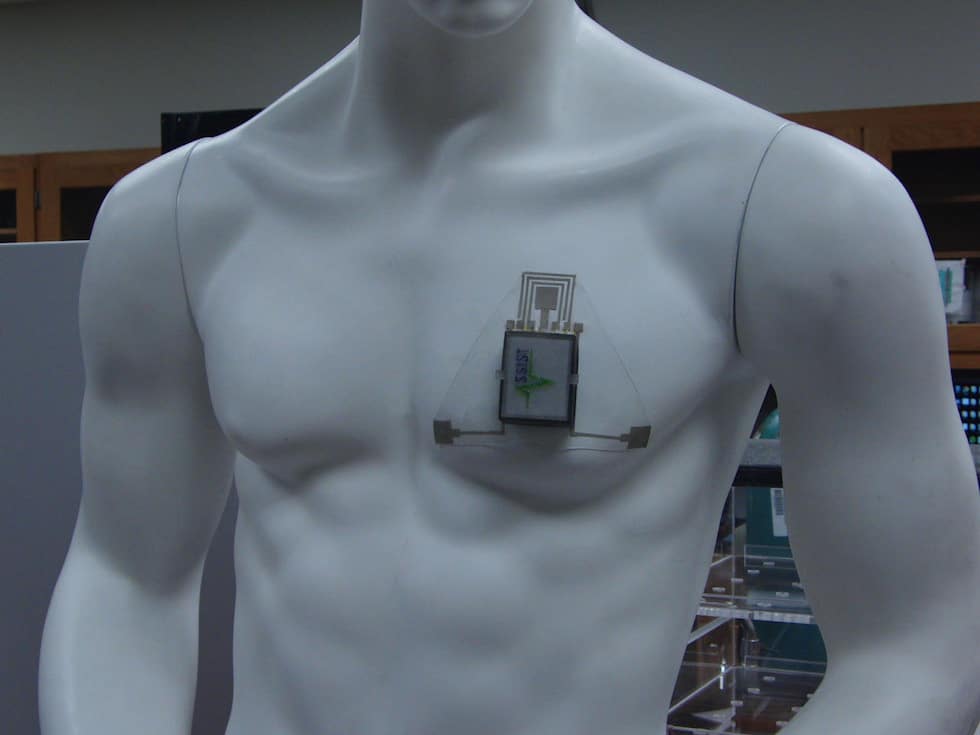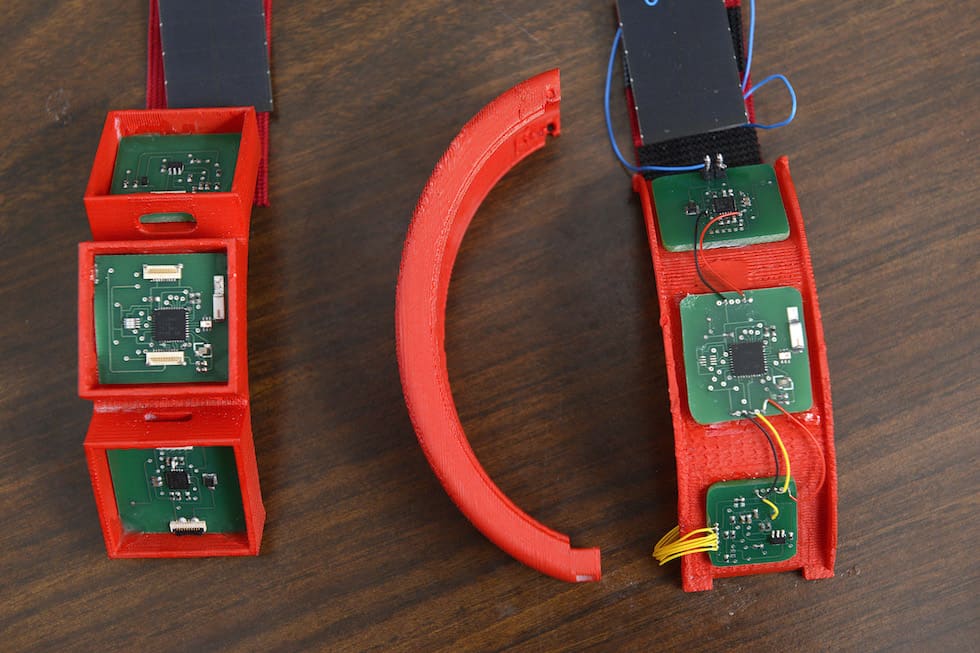
The so-called Health and Environmental Tracker (HET) is a suite of new sensor devices developed by researchers from the US National Science Foundation’s Nanosystems Engineering Research Center for Advanced Self-Powered Systems of Integrated Sensors and Technologies (ASSIST) at North Carolina State University.
“Our goal was to design a wearable system that could track the wellness of the subjects and in particular provide the infrastructure to predict asthma attacks, so that the users could take steps to prevent them by changing their activities or environment,” said Alper Bozkurt, the principal investigator of a paper describing the work and an assistant professor of electrical and computer engineering at NC State.
The HET system is said to incorporate a host of novel sensing devices incorporated into a wristband and a patch adhered to the chest. The patch includes sensors that track a patient’s movement, heart rate, respiratory rate, the amount of oxygen in the blood, skin impedance and wheezing in the lungs.
The wristband focuses largely on environmental factors, monitoring volatile organic compounds and ozone in the air, as well as ambient humidity and temperature. The wristband also includes additional sensors to monitor motion, heart rate and the amount of oxygen in the blood.
The system also has a non-wearable spirometer, which patients breathe into several times a day to measure lung function.
“Right now, people with asthma are asked to use a peak flow meter to measure lung function on a day-to-day basis,” said James Dieffenderfer, lead author of the paper and a Ph.D. student in the joint biomedical engineering program at NC State and the University of North Carolina at Chapel Hill.
“That information is used to inform the dosage of prescription drugs used in their inhalers. For HET, we developed a customized self-powered spirometer, which collects more accurate information on lung function and feeds that data into the system.”

Data from the sensors is transmitted wirelessly to a computer, where custom software collects and records the data.
“The uniqueness of this work is not simply the integration of various sensors in wearable form factors,” said Veena Misra, co-author of the paper and a professor of electrical and computer engineering at NC State. “The impact here is that we have been able to demonstrate power consumption levels that are in the sub-milliwatt levels by using nano-enabled novel sensor technologies. Comparable, existing devices have power consumption levels in the hundreds of milliwatts.
“This ultra-low power consumption is important because it gives the devices a long battery life, and will make them compatible with the power generated by the body, which is not a lot,” said Misra.
“We have tested the system in the benchtop and on a limited number of human subjects for proof of concept demonstration and have confirmed that all of the sensors work, and that the system accurately compiles the data,” Misra said.
The researchers plan to begin testing the system on a larger subject population this summer.
The paper, “Low Power Wearable Systems for Continuous Monitoring of Environment and Health for Chronic Respiratory Disease,” is published in the IEEE Journal of Biomedical and Health Informatics.


Project to investigate hybrid approach to titanium manufacturing
What is this a hybrid of? Superplastic forming tends to be performed slowly as otherwise the behaviour is the hot creep that typifies hot...